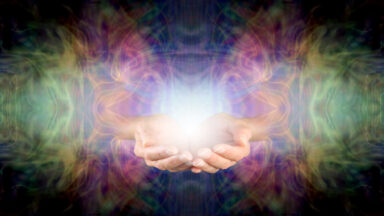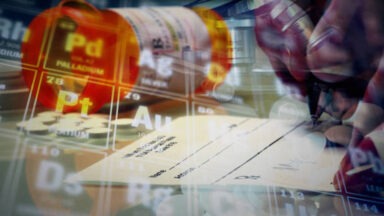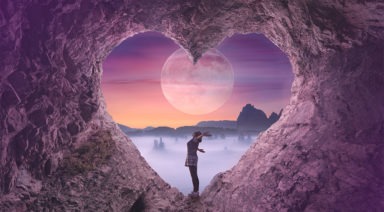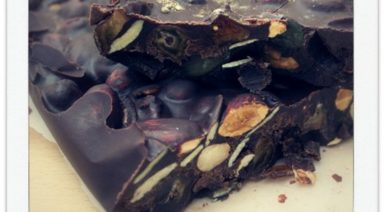5 Methods for Energy Healing

The one thing that is undoubtedly universal amongst all of us is energy. It is the pervasive force that allows for life to exist and flourish, yet our Westernized minds are often reluctant to embrace it as something that should be considered in medicine. Meanwhile, it is the focus of many ancient Eastern health practices and remedies for the things that commonly ail us, and it can be used as a supplement to the prescribed medicine that we know to be tried and true. So what is energy healing, and how can you implement it into your life to benefit your health and wellbeing? These five different methods should give you a good idea.
How Does Energy Healing Work?
Depending on the method, energy healing focuses on the life force that flows through all of us; that force that dictates our mood, health, energy, and ability to connect with other beings. In Chinese and Japanese culture that force is referred to as ki or qi (pronounced: chi). In India, it is known as prana the energy that spins and flows through the chakras, an intangible force that cannot be comprehended in the materialist sense.
Although the perspective of western science and medicine often labels energy healing as pseudoscientific, the perception is starting to change as scientists and academics begin to understand the principles behind the techniques and benefits that have been known to eastern cultures for centuries. The learnings and breakthroughs in quantum physics have brought the understanding of the pervasiveness of energy to the forefront of western thought. Not only do our bodies consist of and run on energy in every aspect of their function, but there is an omnipresent field of energy throughout the universe that is now being studied via quantum field theory. This universal energy known to eastern cultures and the newly discovered quantum field are talking about the same thing, disagreeing simply over semantics.
Influencing this flow of energy by implementing physical and mental awareness and intention, can bring about profound and replicable results. Through meditation, physical touch, and exercise our energy bodies can be altered to provide higher states of health, consciousness and, you guessed it, energy. These energy healing techniques can help you find an approach that is right for you and lead you on a path to healing and sustained health, either as a primary or supplemental modality.
Qigong
One of the fundamental practices of energy healing and exercise based on the Chinese concept of qi, qigong is concerned with balancing the flow of energy throughout the body. Much like Tai Chi or yoga, qigong cultivates the life force through a series of body postures, breathing, and meditation. It is also used as a foundational practice for martial arts, as it develops balance, agility, and muscle strength.
Qigong practitioners aim to develop higher levels of awareness, reduced anxiety, and a clearer vision of one’s purpose in life. It is often used as an effective practice in sports medicine, particularly with the elderly, due to its slow and controlled movements that aim to develop stability and ease tension. It has even been endorsed by the Harvard School of Medicine for its therapeutic benefits.
Qigong works by opening up blocked meridians, or the routes through which qi flows, in order to allow for unimpeded movement of energy throughout the body. The philosophy of qigong posits that blocked energy is the cause of illness and disease. By opening up these passages, we can prevent ailments or reopen the flow of energy to begin the healing process when we are sick.
Chinese Meridians and Acupuncture
The meridians are a map of routes within our body, through which qi energy flows. These meridians correspond with the connections and routes of muscles, endocrine glands and the nervous system. There are over 600 points on the body that acupuncture targets with thin needles that are directly connected to major organs and bodily systems. These connections are made through the meridians and collaterals, the vessels associated with meridians.

Knowledge of these meridians and collaterals is thought of very highly in Chinese culture and is considered equally as important as a doctor’s knowledge of our anatomy. Acupuncture is thought to promote the release of certain adrenal hormones like ACTH and cortisol that can help with certain bodily pains and organ function. It is even thought to have the potential to cure or help with overcoming addictions.
Of all of the different types of Traditional Chinese Medicine, acupuncture has gained the most notoriety, specifically as a complimentary modality to modern medicine. It has been widely embraced by doctors and patients throughout the western world, and could be one of the keys to a broader acceptance of eastern alternative medicine. Though needles are involved, the process is virtually painless and often relaxing.
Acupuncture has been found to treat a number of mental ailments like depression, anxiety, and negative moods. It has also had a positive impact on deeper physical issues like digestive problems and chronic pain.
Reflexology
Reflexology finds its roots in the Chinese focus on balancing the flow of qi, but primarily targets the hands, ears, and feet. Different locations on our feet and hands are thought to have direct connections through the meridians to different organs and systems in our body that can be detoxed and positively influenced. Through a targeted and sometimes intense massage, reflexology frees up blocked energy through stimulation, muscle relaxation, and the encouragement of lymph flow.

Reflexology is said to cleanse the body of toxins, boost the immune system, balance energy, and increase circulation. After a reflexology foot massage, one might feel like they are walking on air or feel lighter in their stride. Though these immediately noticeable effects can be fleeting, the unseen, internal effects can provide a longer lasting benefit.
Chakra Healing
The Chakras are the ancient Indian conception of our body’s primary energy centers and are very similar in nature to the ancient Chinese conception. The word chakra translates literally to wheel and is thought to be one of seven spinning centers of energy found in our bodies. Our chakras, based on their location, are connected to key endocrine glands and areas of nervous system function throughout the body, much like the Chinese meridians.

The seven Chakras are located in alignment from the top of our head, to the base of our spine and, when functioning in synchronicity, allow for a steady flow of energy throughout the body. Much like the Chinese yin-yang balance of qi, the energy in our chakras must be properly balanced. It doesn’t make sense to have an overabundance of energy in one chakra and a deficiency in another. Chakras also have the ability to open and close, allowing for the outward and inward flow of energy. Our chakras tend to close when we experience negativity, sadness and anger. In order to open up chakras we use breathing techniques, meditation and intention to eliminate negativity and open up to the flow of positive energy.
The seven chakras are as follows:
- Muladhara or Root Chakra: Base of Spine (tailbone)
- Swadhisthana or Sacral Chakra: Two inches below the navel
- Manipuraka or Solar Plexus Chakra: Three inches above navel
- Anahata or Heart Chakra: Located at Heart
- Vishuddhi or Throat Chakra: Located at Throat
- Sahasrara or Third Eye: Center of Forehead/Middle of Eyebrows
- Brahmarandra or Crown Chakra: Top of Head
Reiki
This Japanese technique was developed in the early 20th century by Mikao Usui based on the five principles of Japan’s emperor, Meiji. They are:
- Don’t get angry
- Don’t worry
- Be grateful
- Work diligently
- Be kind to others
Reiki is also based on the idea of the flowing life force known in Japanese as ki. The practice was developed to help people realize the importance of making an intentional effort to heal and be conscious of their health. This concept of self-improvement and self-discipline, that is a characteristic of Japanese culture, encourages Reiki practitioners to incorporate energy healing into their lives, but to also take an active role in healing oneself.

Reiki is a spiritual practice with its root word, Rei, roughly translating to “God’s wisdom” or “a higher power’s wisdom,” though it is not religious. Rather, it is based on this recurrent concept of the unseen life force that flows between us that can be channeled and used for beneficial means. Reiki uses palm-healing or hands-on-healing to transfer, balance, and realign energy from the healer to the recipient. Some universities throughout the US have even begun to incorporate reiki classes into certain curricula.
There are many commonalities that can be seen between these different methods of energy healing and it makes sense that they are all so similar. Though these time-tested traditions varied semantically, they all understood the flow of energy throughout our bodies and its importance in our health and wellbeing. Which one of these methods have you had success with and which will you implement in your life?
This 5-Step Method Allows You to Channel Healing Energy

There are many named healing modalities, and by all means, use any that works for you. However, healing in its purest form has no name. Healing is a process of clarity, connection, and commitment.
Let’s unpack the 5 steps for channeling organic healing.




































